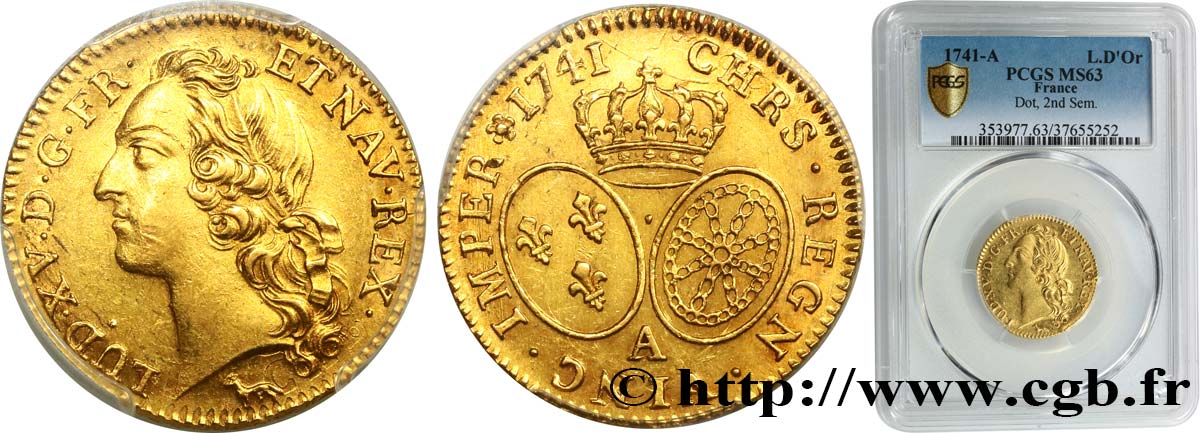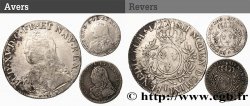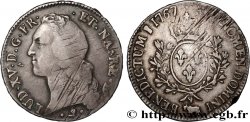Live auction - bry_546197 - LOUIS XV THE BELOVED Louis d’or aux écus ovales, tête ceinte d’un bandeau 1741 Paris
You must signin and be an approved bidder to bid, LOGIN TO BID. Accounts are subject to approval and the approval process takes place within 48 hours. Do not wait until the day a sale closes to register. Clicking on "BID" constitutes acceptance of the terms of use of cgb.fr private live auctions.
Bids must be placed in whole Euro amounts only. The sale will start closing at the time stated on the item description; any bids received at the site after the closing time will not be executed. Transmission times may vary and bids could be rejected if you wait until the last second. For further information check the Live auction FAQ
All winning bids are subject to a 18% buyer’s fee.
All winning bids are subject to a 18% buyer’s fee.
| Estimate : | 3 000 € |
| Price : | 2 800 € |
| Maximum bid : | 2 800 € |
| End of the sale : | 10 September 2019 17:04:04 |
| bidders : | 2 bidders |
Type : Louis d’or aux écus ovales, tête ceinte d’un bandeau
Date: 1741 2e
Mint name / Town : Paris
Quantity minted : 90512
Metal : gold
Millesimal fineness : 917 ‰
Diameter : 24 mm
Orientation dies : 6 h.
Edge : cordonnée
Rarity : R1
Slab

PCGS :
Coments on the condition:
Ce louis est frappé sur un flan large. Exemplaire présentant de hauts reliefs et bien venu à la frappe. Infime rayure sur la joue du roi
Catalogue references :
Predigree :
Exemplaire sous coque PCGS MS63, n° 353977.63/37655252
Obverse
Obverse legend : LUD. XV. D. G. FR. - ET NAV. REX..
Obverse description : Tête de Louis XV à gauche, ceinte d'un bandeau, les cheveux longs ; (Mm) sous le buste.
Obverse translation : (Louis XV, par la grâce de Dieu, roi de France et de Navarre).
Reverse
Reverse legend : CHRS. REGN. VINC. IMPER (MG) 1741.
Reverse description : Deux écus ovales de France et de Navarre, sous une couronne ; au-dessous la lettre d'atelier.
Reverse translation : (Le Christ règne, vainc et commande).
Commentary
D’après le Répertoire de Frédéric Droulers, 90.512 louis ont été frappés durant les premier et second semestres de 1741.








 Report a mistake
Report a mistake Print the page
Print the page Share my selection
Share my selection Ask a question
Ask a question Consign / sell
Consign / sell
 Full data
Full data










